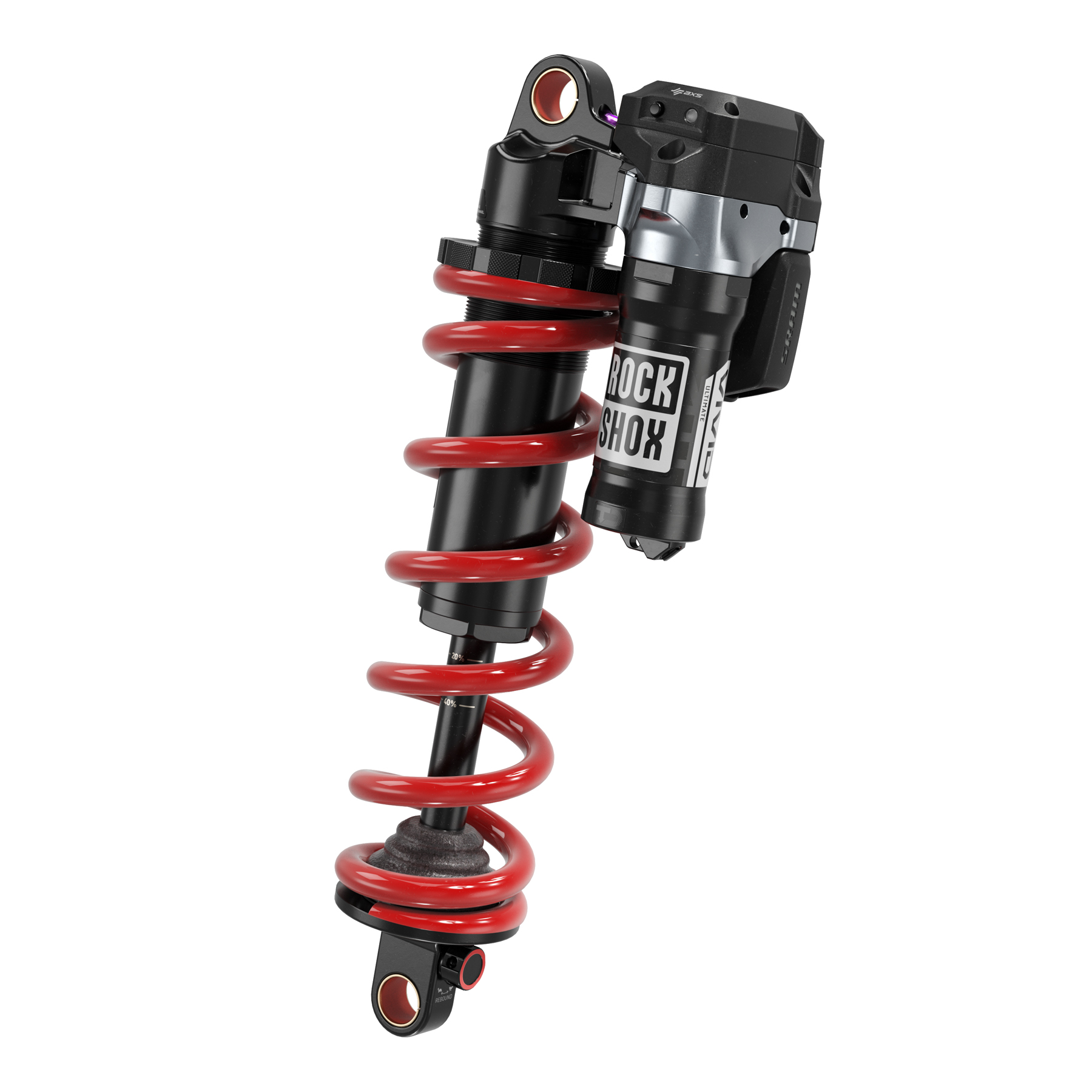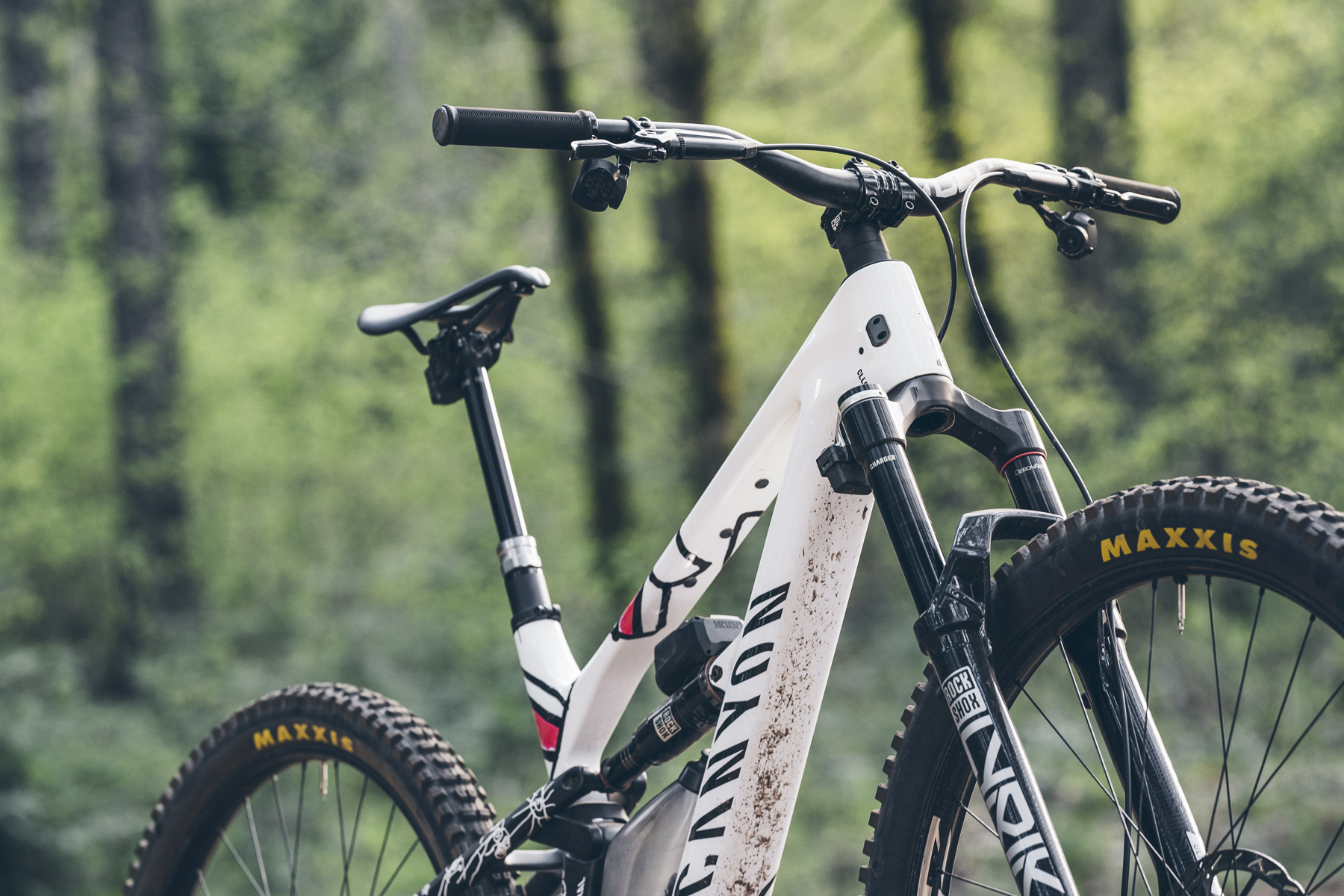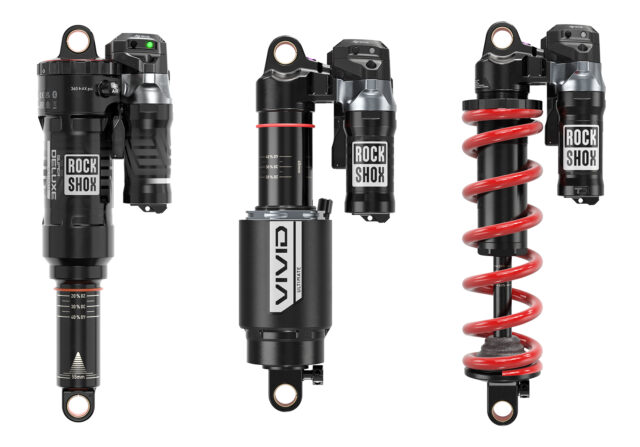2025 RockShox Flight Attendant Forks & Shocks
MSRP:
- ZEB Ultimate Flight Attendant: $1,599 / €1,799 / £1,609
- Lyrik Ultimate Flight Attendant: $1,549 / €1,749 / £1,569
- Pike Ultimate Flight Attendant: $1,499 / €1,699 / £1,519
- Super Deluxe Ultimate Flight Attendant: $949 / €1,049 / £939
Stated Weights:
- ZEB Ultimate Flight Attendant: 2,450 g
- Lyrik Ultimate Flight Attendant: 2,100 g
- Pike Ultimate Flight Attendant: 1,960 g
- Super Deluxe Ultimate Flight Attendant: 560 g
- Vivid Ultimate Flight Attendant: 780 g
- Vivid Coil Ultimate Flight Attendant: 960 g
Sizes Offered:
- ZEB Ultimate Flight Attendant: 29’’, 44 mm offset, 170 mm travel
- Lyrik Ultimate Flight Attendant: 29’’, 44 mm offset, 160 mm travel
- Pike Ultimate Flight Attendant: 29’’, 44 mm offset, 140 mm travel
- Shocks: n/a

Intro
RockShox has been busy. Earlier this year, they brought their Flight Attendant electronically-controlled suspension system to the SID family of XC-oriented forks and shocks, and they added a bunch of new functionality to the system while they were at it.
Then last week, they debuted the new Charger 3.1 fork damper, Vivid Coil shock, and overhauled the Super Deluxe shock in the process.
Now, they’re smushing all of the above together, with new Charger 3.1-based Flight Attendant forks, new Vivid Flight Attendant shock offerings (both air and coil), and an overhauled Super Deluxe Flight Attendant.
Background, Design, & Versions
We’ve covered the background concept of Flight Attendant a bunch of times now, so for the whole story, you can check out our Full Review of the original system. For the shorter version, I’ll return to what I wrote about the new SID / SIDLuxe version from a couple of months ago:
Flight Attendant is an electronically controlled suspension system that uses sensors on the fork and shock, plus one in the crank, to toggle the fork and shock between three different compression damping settings, with the end goal of improving pedaling efficiency. When the system predicts that you’ll want the fork and/or shock firmed up for improved efficiency, it’ll do so wirelessly and automatically. When it thinks you’re likely to encounter a bump, it opens both, and the fork and shock behave normally. Both the fork and shock can separately toggle between three different modes, named “Open,” “Pedal,” and “Lock,” as the system deems appropriate (the fork can, at times, be one level softer than the shock), depending on what inputs the system is getting.
[There’s a lot of user control over how the system chooses to prioritize efficiency vs. suspension performance, including the ability to manually override it. Again, check out our Full Review for all the details.]

That’s all still true of the new iteration here. The big changes are that the Pike, Lyrik, and ZEB Flight Attendant forks now use the just-updated Charger 3.1 damper, and that there are now Flight Attendant versions of the Vivid and Vivid Coil shocks; the Super Deluxe Flight Attendant is now based on the latest iteration of that shock, too.
The original version of Flight Attendant was based on the Charger 2.1 fork damper — now two generations removed from RockShox’s latest Charger 3.1 damper architecture — and the Super Deluxe from that same era.
The previous forks were a little bit of a cross-generation hybrid, as compared to RockShox’s non-Flight-Attendant offerings. The Pike and Lyrik Flight Attendant were ahead of the standard versions in getting the current chassis that debuted in the non-electronic versions in 2023; the ZEB chassis didn’t get a corresponding update for that generation of fork, but the Pike, Lyrik, and ZEB Flight Attendant got the new DebonAir+ air spring with Buttercups ahead of their non-electronic counterparts as well.
Then RockShox rolled out the new Pike and Lyrik chassis, the DebonAir+ air spring, and the new Charger 3 damper on the non-electronic versions of the forks, and overhauled the Super Deluxe rear shock to go with it. However, the Flight Attendant forks kept the older Charger 2.1 damper architecture, and their matching rear shock remained based on the prior-generation Super Deluxe.

So, that’s the backstory. This latest round of updates is all about bringing the Flight Attendant family up to date with RockShox’s latest non-electronic hardware. The new Flight Attendant versions of the Pike, Lyrik, and ZEB forks all get a new damper iteration that’s based around the Charger 3.1 that debuted last week; the Super Deluxe gets a similar series of updates (again, see our First Look on the new non-Flight Attendant suspension for what changed there), and RockShox has added Flight Attendant versions of the Vivid and Vivid Coil to the lineup.
As with the original Charger 2.1-based original version, the Charger 3.1 Flight Attendant damper forgoes the high-speed compression adjuster to make way for the electronics and the three-position damper switch. The older Super Deluxe rear shock that the original Flight Attendant system was based on didn’t have a high-speed compression adjuster to lose in the first place, but the new Super Deluxe Flight Attendant and the Vivid versions (both air and coil) do away with the HSC knob as well.
Low-speed compression on both the forks and shocks is adjusted electronically through the buttons on the fork control module, the same as it was on the original versions. As with the current generation Super Deluxe, the Flight Attendant version has an option for a hydraulic bottom-out circuit, without any external adjustability; the Vivid and Vivid Coil get an externally adjustable HBO circuit, the same as their non-Flight Attendant counterparts.

Adaptive Ride Dynamics
Adaptive Ride Dynamics debuted with the SID family of Flight Attendant forks and shocks earlier this year and ported over to the then-current Pike / Lyrik / ZEB / Super Deluxe through a firmware update. That functionality carries over to the new forks and shocks. To summarize it, we’ll once again return to what we discussed in our First Look at the SID family Flight Attendant parts:
In short, by replacing the pedal sensor in the Flight Attendant system with a SRAM / Quarq power meter (either the spindle or spider-mounted version, as featured on various levels of their T-Type groupsets), Flight Attendant can detect how hard you’re pedaling, and use that information to better inform its decisions to toggle between suspension modes.
To do so, Adaptive Ride Dynamics categorizes your output into four “Effort Zones” — dubbed “Low,” “Medium,” “High,” and “Sprint” — based on the power meter data. It then factors which Effort Zone you’re in as part of the decision-making process to set the Open / Pedal / Lock settings on the fork and shock.
The Effort Zones don’t directly correlate to Open / Pedal / Lock settings on the fork and shock. Rather, they’re used as a more nuanced input than the simple binary pedal sensor (which can only tell whether or not you’re turning the cranks, not how hard you’re doing so) to make better decisions about which suspension settings to apply.
The Bias Adjust setting and inputs from the fork and shock control modules also influence the operation of the system. Selecting a higher Bias Adjust setting will encourage the system to trend toward the Pedal and Lock settings more regularly, and use the Open one more sparingly; putting down more power and moving into a higher Effot Zone will do the same.
Of course, different riders’ thresholds for the different Effort Zones are going to vary, potentially by a lot. When paired with a compatible power meter, Flight Attendant takes your power data from your last couple of rides and automatically configures the Effort Zone thresholds based on your actual power output. You can also set the thresholds manually in the AXS phone app if you’d prefer.
You can still run Flight Attendant with the more basic spindle-mounted pedal sensor instead of a power meter, but Adaptive Ride Dynamics won’t be supported. Adaptive Ride Dynamics is also not available on eMTBs at this time.
Some Questions / Things We’re Curious About
(1) The original version of Flight Attendant already did an impressive job of switching between modes at the right times, so how much does Adaptive Ride Dynamics change things?
(2) And how do the new Charger 3.1 damper and Vivid variants of the Flight Attendant system perform in general?
Bottom Line (For Now)
The original implementation of the Flight Attendant was already very impressive in how well it improved the pedaling efficiency of the YT Capra that we tested it on, and it did so quite seamlessly from a suspension performance standpoint. So we’re very curious to see how much Adaptive Ride Dynamics refines the system even more, and how the new forks and shocks perform in general. Stay tuned for more if and when we’re able to get on a setup.
